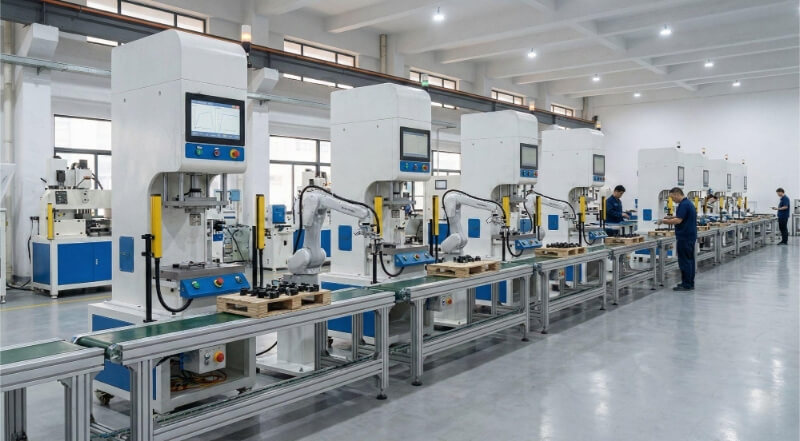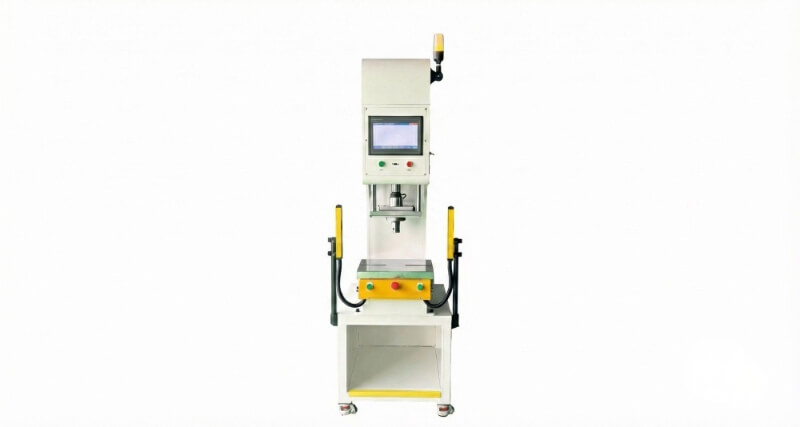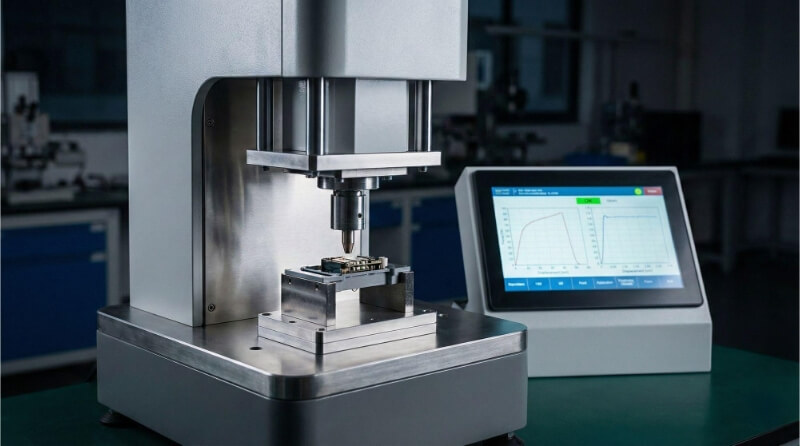Les équipes de fabrication sont soumises à une pression constante pour fournir des pièces précises et durables tout en réduisant les coûts et les délais de production. Les erreurs de grugeage de la tôle entraînent des pertes de matériaux, des retards dans les projets et des problèmes de qualité qui nuisent aux résultats. Grâce à des techniques de grugeage appropriées, les fabricants réduisent les taux de rebut de 35% et accélèrent le temps d'assemblage de 40%.
Le grugeage des tôles crée des coupes et des ouvertures précises dans les tôles, ce qui permet aux pièces de s'emboîter parfaitement lors de l'assemblage. Les machines modernes de grugeage à commande numérique atteignent une précision de 0,001 pouce, ce qui permet de réaliser des assemblages complexes dans des secteurs allant de l'aérospatiale à l'électronique grand public. Le choix de la méthode de grugeage a un impact direct sur la qualité du produit et l'efficacité de la fabrication.
Les sections suivantes explorent les techniques de grugeage essentielles, les considérations relatives aux matériaux et les applications concrètes qui favorisent l'excellence de la fabrication. Nous verrons comment un grugeage correct stimule la productivité tout en maintenant des normes de qualité strictes.
Qu'est-ce que le grugeage de la tôle ?
Le grugeage consiste à découper des sections de tôle spécifiques, généralement dans les coins ou sur les bords. Ce processus permet de créer des espaces délibérés qui facilitent flexionL'encoche peut être utilisée pour la construction, l'assemblage ou l'emboîtement avec d'autres composants. Une encoche bien réalisée réduit la concentration des contraintes et renforce l'intégrité de la structure.
Avantages du grugeage dans la fabrication
Le succès de la fabrication métallique dépend de l'efficacité de la production, du contrôle de la qualité et de la gestion des coûts. Des techniques de grugeage appropriées améliorent directement ces mesures de performance clés dans les opérations de fabrication.
Amélioration de l'efficacité
Le grugeage accélère les processus d'assemblage et réduit les coûts de main-d'œuvre :
- 50% préparation plus rapide des joints
- Rationalisé assemblée séquences
- Réduction des opérations secondaires
Précision et cohérence
La technologie moderne de crantage permet d'obtenir des résultats reproductibles sur l'ensemble des séries de production :
- Tolérances de ±0,001 pouce
- Des joints uniformes
- Tolérances de pliage précises
- Ajustement cohérent des pièces
Réduction des déchets et des coûts
Les pratiques d'encochage stratégique permettent de réduire les coûts d'exploitation :
- 25% moins de déchets de matériaux
- Moins de pièces rejetées
- Diminution des taux de reprise
Inconvénients du grugeage dans l'usinage des métaux
La compréhension des limites permet d'optimiser la sélection des processus et de prévenir les problèmes de fabrication.
Contraintes et déformations des matériaux
Les contraintes physiques affectent l'intégrité des matériaux :
- Durcissement des bords
- Risques de microfissures
- Distorsion thermique
- Effets d'écrouissage
Coût
L'investissement initial et les dépenses opérationnelles comprennent
- Achat d'équipement ($5,000-$50,000)
- Exigences d'entretien
- Formation des opérateurs
- Remplacement de l'outillage
Limites des matériaux épais
L'épaisseur du matériau influe sur les capacités du processus :
- Contraintes d'épaisseur maximale
- Exigences en matière d'alimentation
- Taux d'usure des outils
- Réduction de la vitesse de traitement
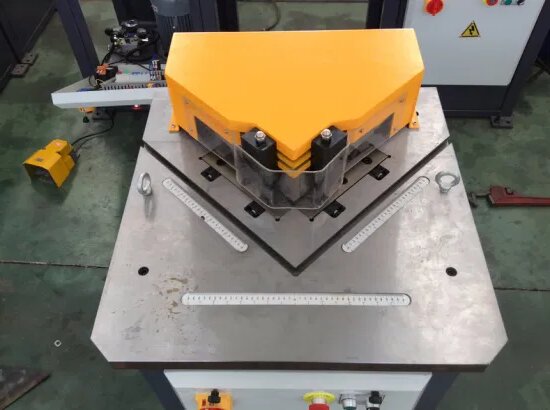
Comment fonctionne le processus de grugeage de la tôle?
Grâce à des opérations mécaniques contrôlées, le processus de grugeage de la tôle transforme le matériau brut en composants grugés avec précision. Chaque étape s'appuie sur la précédente pour garantir des résultats cohérents et de haute qualité.
Materielle préparation
Les graisses, les huiles et les contaminants de surface sont éliminés grâce à des processus de nettoyage ciblés. Les techniciens marquent des points de référence clés à l'aide d'outils spécialisés et positionnent le matériel selon des spécifications prédéterminées.
Sélection et réglage des outils
Les opérateurs sélectionnent les matrices et les poinçons appropriés en fonction des propriétés des matériaux et des exigences de conception. Les procédures de réglage comprennent des contrôles d'alignement, des ajustements de jeu et des coupes d'essai sur des échantillons de matériau.
Séquence de coupe
Les opérateurs positionnent la tôle contre des butées ou des fixations pour maintenir une orientation correcte. Les systèmes d'alimentation s'enclenchent en douceur, en appliquant une force contrôlée pour créer des entailles nettes.
Vérification de la qualité
Les équipes chargées de la qualité vérifient l'ajustement et le fonctionnement des produits tout en documentant les résultats pour le contrôle des processus. Un retour d'information rapide permet de procéder à des ajustements immédiats lorsque cela s'avère nécessaire pour maintenir les normes de production.
Techniques et méthodes de grugeage de la tôle
Le choix des techniques de grugeage a un impact sur la qualité du produit final, la vitesse de production et le coût. Chaque méthode répond à des exigences de conception et à des scénarios de production spécifiques.
Entaille à angle droit
Le grugeage à angle droit permet de réaliser des coupes à 90 degrés dans les angles de tôle. Cette technique convient aux applications nécessitant des joints carrés et des courbes perpendiculaires. Le procédé permet d'enlever des carrés précis de matériau, généralement de 0,5 à 4 pouces par côté.
Découpage en V
L'entaille en V permet de réaliser des coupes angulaires pour les courbes et les joints complexes. Le processus crée des entailles en forme de V à des angles compris entre 30 et 135 degrés. Cette flexibilité permet d'obtenir différents angles de pliage sans chevauchement des matériaux.
Grignotage Entaille
Le grignotage utilise des coupes mineures et consécutives pour créer des motifs d'entailles complexes. Cette méthode offre une grande souplesse pour les formes et les courbes irrégulières. Chaque entaille enlève de 0,1 à 0,25 pouce de matériau par coup.
Entaillage des bords et des coins
Le grugeage des bords modifie les bords de la tôle pour les joints et les onglets. Le grugeage d'angle enlève de la matière aux intersections pour faciliter le pliage et l'assemblage. Ces deux méthodes nécessitent un contrôle précis de la profondeur et de la largeur.
Comparaison des techniques de grugeage
| Technique | Vitesse | Précision | Coût | Gamme de matériaux (pouces) |
|---|---|---|---|---|
| Angle droit | Haut | ±0.005" | Moyen | 0.02-0.25 |
| Découpage en V | Moyen | ±0.003" | Haut | 0.01-0.19 |
| Grignotage | Faible | ±0.007" | Faible | 0.01-0.12 |
| Bords/Coins | Haut | ±0.004" | Moyen | 0.02-0.19 |
Matériaux courants utilisés pour le grugeage
Le choix du matériau influe sur les paramètres de grugeage, la sélection de l'outil et la qualité du produit final. Les différents métaux nécessitent des vitesses de coupe, des géométries d'outils et des réglages de pression spécifiques.
Aluminium
En raison de sa nature plus souple, l'aluminium offre d'excellentes caractéristiques de grugeage. Les vitesses de traitement atteignent 200 coups par minute avec une usure minimale de l'outil. La faible densité du métal et sa grande formabilité le rendent idéal pour les modèles de grugeage complexes.
Spécifications typiques :
- Plage d'épaisseur : 0.020″ - 0.250″
- Résistance à la traction: 27-45 ksi
- Durée de vie de l'outil : 50 000+ cycles
Acier (doux, inoxydable, galvanisé)
Les variantes d'acier exigent un outillage robuste et des réglages de machine précis. L'acier doux est traité plus rapidement que l'acier inoxydable, tandis que l'acier galvanisé nécessite une attention particulière pour l'intégrité du revêtement.
Paramètres de traitement :
- Acier doux: 100-150 coups/min
- Inox : 60-90 coups/min
- Galvanisé : 80-120 coups/min
Titane et autres alliages
Les alliages spécialisés nécessitent un contrôle minutieux des paramètres de coupe. Ces matériaux nécessitent souvent des vitesses réduites et des stratégies de refroidissement améliorées.
Caractéristiques de coupe :
- Vitesse : 40-60 coups/min
- Dureté de l'outil : 60-62 HRC
- Liquide de refroidissement : Nécessaire
Comprendre les angles et la profondeur du grugeage
Calcul des angles de crantage
Un calcul correct de l'angle permet de réaliser des pliages et des ajustements précis. La formule tient compte de l'épaisseur du matériau et de l'angle de pliage souhaité :
Angle d'encoche = Angle de pliage - (2 × Facteur K × Épaisseur du matériau)
Contrôle de la profondeur et de la précision du grugeage
Le contrôle de la profondeur repose sur :
- Systèmes de positionnement numérique
- Arrêts calibrés
- Surveillance en temps réel
- Inspection régulière des outils
Comment Poinçonnage de tôle et opération de grugeage Compare?
Fabrication de tôles utilise le poinçonnage et l'encochage, mais chacun d'entre eux répond à des besoins de fabrication distincts. Comprendre leurs différences permet d'optimiser les processus de production et d'obtenir de meilleurs résultats.
Opérations de poinçonnage :
- Création de trous internes
- Des taux de production plus élevés
- Une gamme de matériaux plus large
- Modèles plus complexes
Caractéristiques de crantage :
- Modifie uniquement les bords
- Besoins de précision plus élevés
- Réduction des coûts d'outillage
- Mieux pour les prototypes
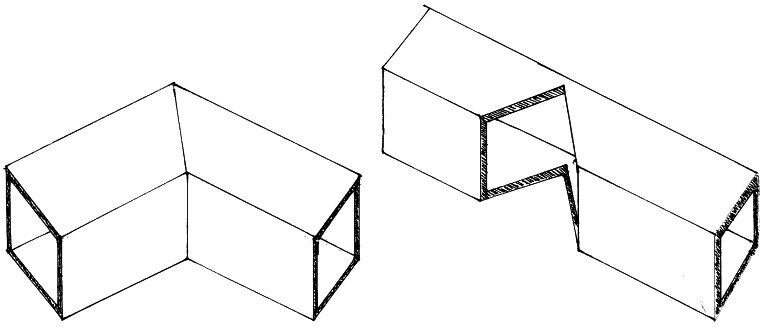
Comment le grugeage de la tôle se compare-t-il au grugeage des tubes? ?
Ces deux méthodes de grugeage répondent à des besoins de fabrication différents. Bien qu'elles partagent les mêmes principes de base, leurs applications et leurs exigences techniques diffèrent considérablement.
Entaillage de la tôle :
- Traitement des matériaux plats
- Des vitesses de production plus élevées
- Des besoins d'installation plus simples
- Réduction des coûts d'outillage
Entaillage du tube :
- Prise en charge des profils 3D
- Géométrie plus complexe
- Besoins particuliers en matière d'appareils d'éclairage
- Des spécifications de précision plus élevées
Applications industrielles du grugeage de la tôle
Le grugeage de la tôle est un processus fondamental dans de nombreux secteurs de la fabrication. Chaque industrie utilise des techniques de grugeage spécialisées pour répondre à des exigences de produit et à des normes de qualité uniques.
Le grugeage dans l'industrie automobile
Le secteur automobile a besoin d'un grugeage précis pour les composants et les éléments structurels des véhicules :
- Panneaux de carrosserie avec des exigences d'adaptation précises
- Rails de cadre et composants du châssis
- Composants du système d'échappement
- Fabrication des supports et des fixations
- Structures de soutien intérieur
Applications aérospatiales du grugeage
La fabrication aérospatiale exige un grugeage ultra-précis pour les composants critiques :
- Ensembles de carters de moteurs
- Articulations des composants de l'aile
- Connexions des panneaux du fuselage
- Composants de la surface de contrôle
- Éléments du cadre structurel
Découpage pour l'électronique et les appareils
Les fabricants d'électronique grand public et d'appareils électroménagers utilisent le crantage pour.. :
- Fabrication d'enceintes
- Systèmes de ventilation
- Chemins d'acheminement des câbles
- Supports de montage des composants
- Structures de soutien internes
Utilisations dans la construction et l'architecture
Les applications dans le domaine du bâtiment et de la construction comprennent
- Conduits de chauffage, de ventilation et de climatisation
- Composants du cadre en acier
- Panneaux métalliques décoratifs
- Systèmes de gouttières
- Supports de support
Facteurs à prendre en compte dans la machine à gruger la tôle
Le choix d'une machine à gruger appropriée a une incidence sur la qualité de la production, l'efficacité et les coûts du projet. La sélection d'une bonne machine commence par l'analyse des exigences techniques et des demandes de production. Vous trouverez ci-dessous les facteurs critiques que tout fabricant doit évaluer.
La machine doit être sécurisée
La sécurité des machines commence par une stabilité mécanique robuste et des systèmes de montage solides. Des points d'ancrage fixes empêchent tout mouvement pendant le fonctionnement, tandis que l'amortissement des vibrations réduit le stress opérationnel. Les surfaces antidérapantes et les pieds de nivellement maintiennent un alignement parfait pendant les cycles de coupe intensifs.
Protection de la zone de coupe
Les boucliers de sécurité et les protections forment des barrières critiques autour des zones de coupe. Les barrières physiques empêchent l'opérateur d'entrer en contact avec les pièces en mouvement. Des panneaux de visibilité claire permettent de surveiller le processus tout en maintenant la protection. Des capteurs électroniques interrompent le fonctionnement si les zones de sécurité sont compromises.
Mécanisme de coupe
Le système de coupe offre un contrôle précis de la force grâce à des systèmes mécaniques ou hydrauliques avancés. Les outils affûtés et trempés créent des entailles nettes sans déformation du matériau. Les vitesses de course réglables s'adaptent aux exigences du matériau. Les systèmes d'entraînement direct minimisent les points d'usure mécanique.
Dispositif de réglage de la course
Les mécanismes de réglage de la course permettent un contrôle précis de la profondeur de coupe et de la pression. Les commandes de réglage rapide permettent de passer rapidement d'un type de matériau à l'autre. Les affichages numériques indiquent les positions exactes de la course. Les réglages en mémoire enregistrent les configurations standard pour une configuration rapide.
Conclusion
Le grugeage de la tôle transforme la fabrication grâce à sa précision, son efficacité et sa polyvalence. Le grugeage réduit le temps de production tout en améliorant la qualité lorsqu'il est associé à des techniques et à des équipements appropriés. Au fur et à mesure que la technologie progresse, le grugeage continue d'évoluer, offrant aux fabricants de nouveaux moyens de relever des défis de conception complexes.
Au-delà du grugeage de la tôle, nous offrons des solutions complètes de fabrication sur mesure pour tous vos besoins. Grâce à un équipement de pointe et à une équipe technique professionnelle, nous pouvons répondre à vos diverses exigences dans les domaines suivants Usinage CNC, fabrication de tôleset bien plus encore. Choisissez-nous pour rendre votre processus de fabrication plus efficace et plus transparent.
FAQ
Quel est l'objectif principal du grugeage ?
Le grugeage consiste principalement à créer des découpes précises dans la tôle pour faciliter les opérations de pliage, d'assemblage ou de montage. Ce procédé permet d'obtenir des coins, des joints et des raccords structurels nets dans la fabrication métallique, tout en préservant l'intégrité du matériau.
Quel est le nom de l'encoche en tôlerie ?
Les types d'encoches les plus courants sont les encoches en V, les encoches carrées et les encoches radiales. Chacune répond à des besoins de conception spécifiques - les encoches en V conviennent aux coudes angulaires, les encoches carrées conviennent aux joints à 90 degrés et les encoches radiales réduisent la concentration des contraintes.
Le grugeage peut-il être utilisé sur tous les types de métaux ?
La plupart des métaux supportent les opérations de grugeage, mais les paramètres varient en fonction du matériau. L'aluminium, l'acier et l'acier inoxydable fonctionnent bien avec un outillage standard. Les alliages exotiques nécessitent des outils spécialisés et des vitesses de coupe adaptées pour obtenir des résultats optimaux.
Quelles sont les limites du grugeage CNC ?
Le grugeage CNC est soumis à des contraintes d'épaisseur de matériau, de vitesse de coupe et d'usure d'outil. L'épaisseur maximale est généralement plafonnée à 1/4 de pouce pour les machines standard. Les motifs complexes augmentent le temps de cycle et les matériaux à haute résistance accélèrent l'usure de l'outil.
Quel est l'impact du grugeage sur la résistance et la durabilité du métal ?
Un grugeage correct permet de maintenir l'intégrité de la structure tout en enlevant de la matière. Des coupes nettes minimisent la concentration des contraintes et l'écrouissage. Toutefois, une mauvaise technique ou un mauvais choix d'outil peut créer des points faibles ou des zones de défaillance prématurée.
Hey, je suis Kevin Lee

Au cours des dix dernières années, j'ai été immergé dans diverses formes de fabrication de tôles, partageant ici des idées intéressantes tirées de mes expériences dans divers ateliers.
Prendre contact

Kevin Lee
J'ai plus de dix ans d'expérience professionnelle dans la fabrication de tôles, avec une spécialisation dans la découpe au laser, le pliage, le soudage et les techniques de traitement de surface. En tant que directeur technique chez Shengen, je m'engage à résoudre des problèmes de fabrication complexes et à favoriser l'innovation et la qualité dans chaque projet.

